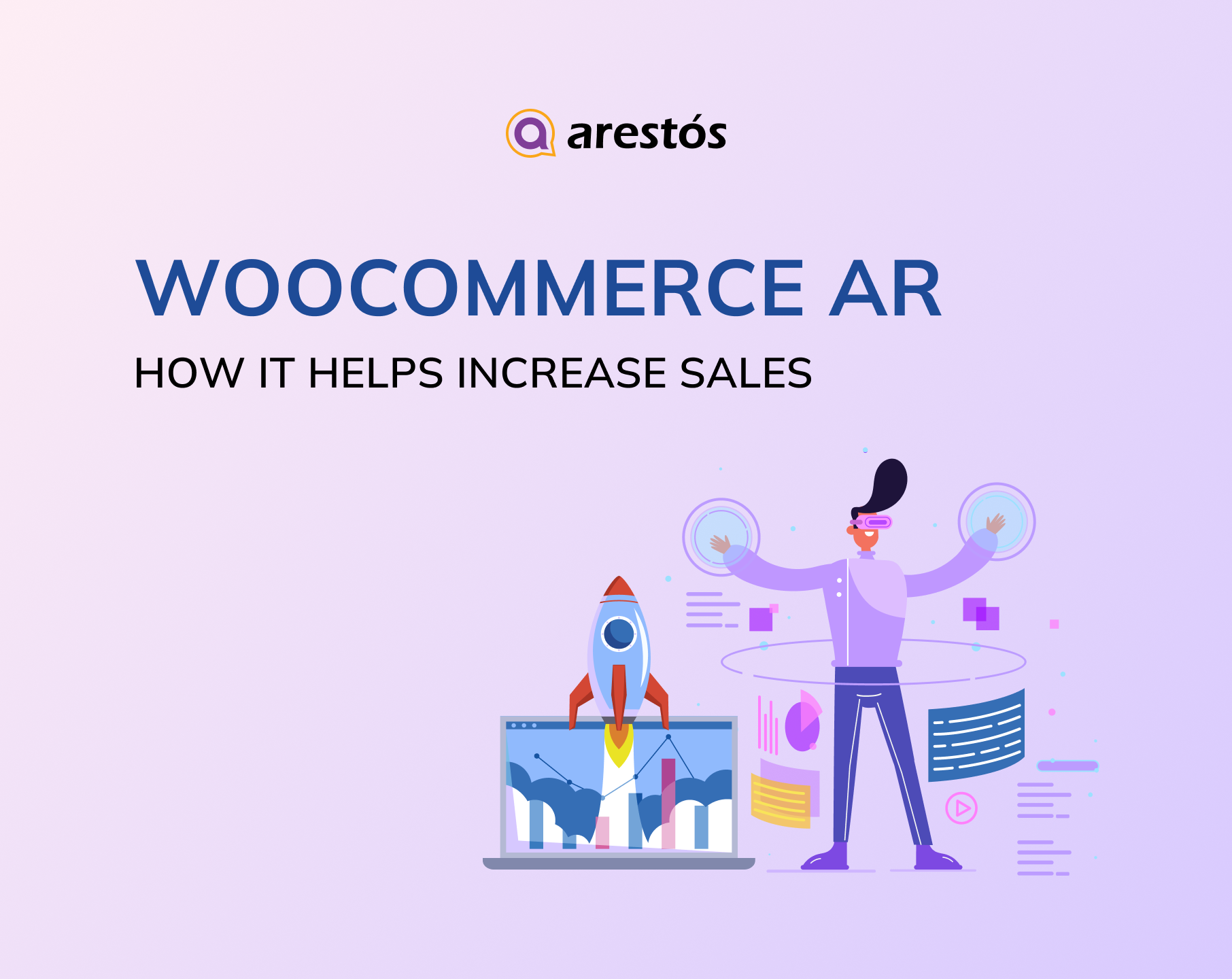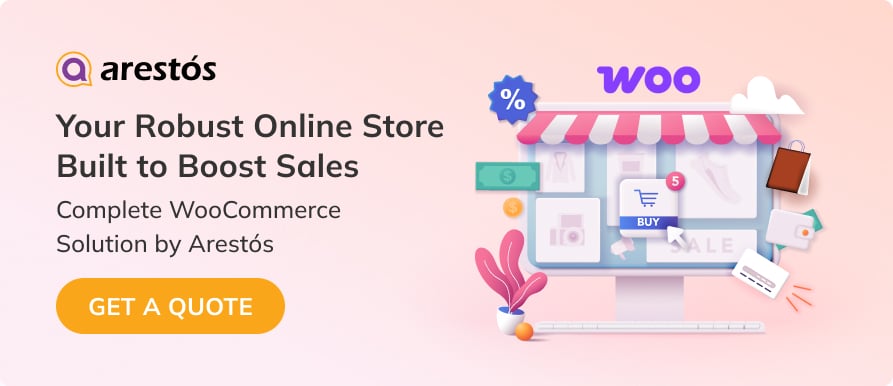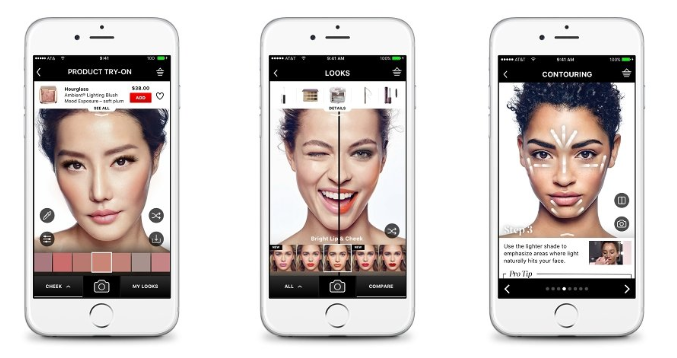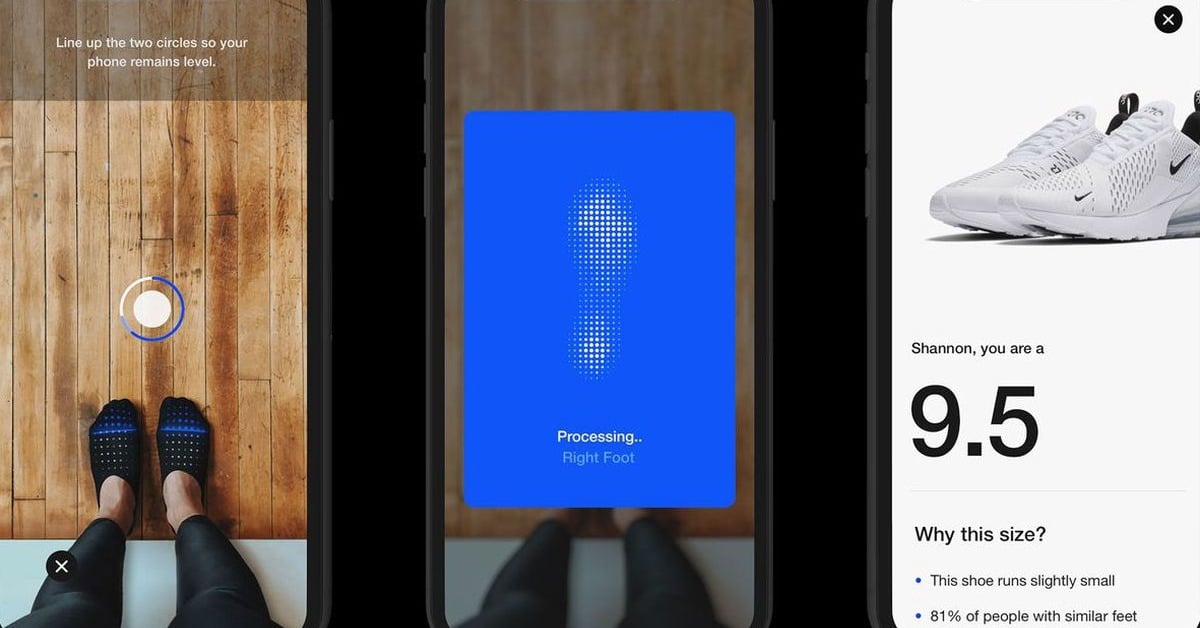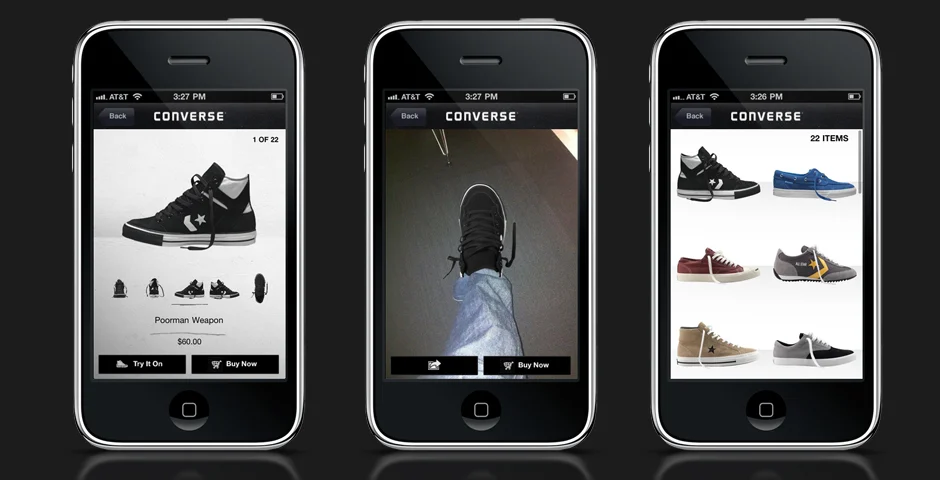Back to featured insights
WooCommerce AR: How It Helps Increase Sales (Case Studies)
Discover how WooCommerce AR is transforming online shopping. Learn how augmented reality helps customers visualize products, make confident decisions, and boost sales through real case studies and practical insights.
Table of Content
Share
WooCommerce AR is changing online shopping by making products interactive and easier to visualize.
For example, IKEA reported a 35% increase in online sales after launching its AR-powered IKEA Place app in 2017, which allows customers to visualize furniture in their own space before purchasing.
This technology is especially beneficial for online retailers of all types, from furniture and fashion to electronics and beauty products, where helping customers visualize products before purchase can directly influence buying decisions.
In this guide, we’ll explore how WooCommerce AR works, its benefits, and real case studies showing how it helps increase sales.
Understanding WooCommerce AR
What Is WooCommerce AR?
WooCommerce AR (Augmented Reality) is the combination of WooCommerce, the leading eCommerce platform for WordPress, and Augmented Reality, a technology that overlays digital 3D objects onto the real world.
In simple terms, WooCommerce AR allows online stores to present their products using interactive 3D models instead of static images. Customers can rotate, zoom, and even project products into their real environment through a smartphone or tablet. This makes the online shopping experience more lifelike and engaging.
Essentially, WooCommerce AR bridges the gap between online browsing and in-person shopping. It helps customers better understand a product’s shape, size, and design before making a purchase decision.
By integrating AR technology, WooCommerce empowers businesses to offer a more immersive and trustworthy shopping experience, helping customers visualize what they’re buying — and increasing the likelihood of conversion.
Tools and Plugins That Power WooCommerce AR
A variety of plugins and external services make it simple to enable AR experiences in WooCommerce—no coding required.
- CartMagician for WooCommerce: A powerful plugin that converts product images into 3D and AR models automatically, with easy embedding on product pages.
- Aryel: A web-based AR marketing platform that lets brands create and track AR campaigns while integrating with WooCommerce.
- Sayduck and Sketchfab: Popular platforms for hosting 3D models that can be linked directly into WooCommerce products for instant AR previews.
- Custom integrations: Developers can build bespoke AR features using WebXR APIs or 3D engines like Three.js for advanced, branded experiences.
How It Works on WooCommerce
WooCommerce AR functions seamlessly within your existing store, requiring only the setup of AR-compatible product assets.
- 3D product models: Store owners upload 3D files (such as .glb, .usdz, or .fbx) that represent the real-world look and dimensions of a product.
- AR viewer integration: Customers tap an “View in AR” button on a product page, which opens the item in their phone’s camera view—placing it directly into their real-world environment.
- Cross-device compatibility: WooCommerce AR is supported on both iOS and Android devices, allowing users to experience AR without needing an app (via WebAR).
- Instant visualization: Customers can scale, rotate, and walk around the virtual object to inspect it from every angle—making online shopping more interactive and informative.
How WooCommerce AR Helps Increase Sales
Integrating Augmented Reality (AR) into WooCommerce gives customers a more immersive way to experience your products. It eliminates doubts, improves engagement, and helps turn browsers into buyers. Here’s how AR contributes to real sales growth:
Builds Customer Confidence in Purchasing Decisions
- Allows customers to visualize products in real environments: Instead of imagining how an item might look, shoppers can place a virtual 3D version of the product in their room using their smartphone, giving them a true sense of scale and fit.
- Reduces uncertainty during decision-making: Seeing how the product looks and fits in their own space removes hesitation and helps customers feel confident about buying.
- Bridges the gap between physical and online shopping: AR provides a “try-before-you-buy” experience, letting users interact with products as if they were in-store.
Reduces Product Returns and Dissatisfaction
- Sets clear and realistic expectations before purchase: Customers can explore all product details — size, color, texture, and design — through AR, ensuring they know exactly what they’re ordering.
- Decreases post-purchase disappointment: Because buyers already preview the product in their own space, there are fewer surprises upon delivery.
- Lowers return rates and operational costs: Fewer mismatched expectations mean fewer refunds, less logistics hassle, and more satisfied customers.
Increases Customer Engagement and Time Spent on Site
- Creates a more fun and memorable shopping experience: Instead of merely browsing static 2D images, customers can dynamically interact with products within their own real-world space. This novelty and interactivity not only make the shopping process more enjoyable but also leave a lasting positive impression of your brand.
- Encourages deeper exploration of your store: As users spend more time viewing and testing products in AR, they are likely to discover additional items and stay longer on your site.
- Boosts conversion through interactive immersion: The more engaged customers are with your products, the more emotionally invested they become in making a purchase.
Strengthens Brand Image and Builds Customer Loyalty
- Positions your brand as innovative and customer-focused: Offering AR experiences demonstrates your commitment to modern, high-quality service and cutting-edge technology.
- Differentiates your store from competitors: Shoppers perceive AR-enabled stores as more professional, forward-thinking, and reliable.
- Fosters repeat visits and customer advocacy: A positive AR experience often leads to stronger emotional connections and encourages customers to recommend your brand to others.
Supports Premium Pricing and Enhances Product Value
- Elevates the perceived value of your products: Interactive AR experiences make items feel more tangible and luxurious, enhancing how customers perceive quality.
- Shifts focus from price to experience: When shoppers are impressed by your AR presentation, they evaluate based on satisfaction and innovation rather than just cost.
- Strengthens your premium brand positioning: Offering AR allows your WooCommerce store to justify higher prices and appeal to a more quality-driven audience.
Real Case Studies of WooCommerce AR Success
IKEA Place – Revolutionizing Furniture Shopping
IKEA, one of the world’s most innovative furniture retailers, has always focused on helping customers visualize how products fit into their homes. To make this possible, IKEA launched the IKEA Place app, integrating Augmented Reality (AR) with its WooCommerce-powered online store.
The app allows users to scan their rooms and virtually place true-to-scale 3D furniture models into the environment. Customers can rotate, move, and preview items under realistic lighting conditions, giving them an accurate idea of dimensions and color. This AR solution has transformed the traditional online shopping experience into an interactive and confidence-driven journey.
Results:
- Online sales increased by 35% since the app’s launch.
- Product return rates dropped by 20%.
- Significantly boosted customer confidence when purchasing large furniture items.
- Enhanced the overall customer experience, positioning IKEA as a pioneer in AR adoption within the furniture retail industry.
Sephora Virtual Artist – Changing the Way We Buy Makeup
Sephora, a leader in the global beauty industry, has redefined online shopping through its Virtual Artist AR feature integrated with WooCommerce. The tool enables customers to virtually try on makeup — such as lipstick, foundation, or eyeshadow — using their smartphone’s camera.
The AR engine maps facial features and lighting to deliver a realistic, personalized preview of products. This solution has made Sephora’s eCommerce experience more interactive, fun, and confidence-inspiring, solving one of the biggest challenges in selling cosmetics online.
Results:
- Engagement within the Virtual Artist feature increased by 200% after launch.
- Lipstick sales rose by 30%.
- Boosted repeat purchases among customers who experienced the AR feature.
- Strengthened Sephora’s brand image as an innovative tech-driven leader in the beauty industry.
Nike Fit – Finding the Perfect Fit with AR
Nike, a global sportswear giant, introduced Nike Fit, an AR-based sizing tool integrated with its WooCommerce online store. By using a smartphone camera, customers can scan their feet to create a precise 3D model. The system then recommends the ideal size for each shoe model, minimizing guesswork.
Beyond size fitting, customers can also view sneakers in AR mode to see how they look in real time. This innovation bridges the gap between digital and in-store experiences, reducing returns and enhancing customer trust.
Results:
- Online shoe sales increased by 15% after implementing Nike Fit.
- Return rates due to sizing issues dropped by 20%.
- Improved customer satisfaction and loyalty through precise size recommendations.
- Reinforced Nike’s reputation as a tech-forward pioneer in integrating AR into eCommerce.
Warby Parker Virtual Try-On – Reinventing the Eyewear Industry
Warby Parker, a trailblazer in online eyewear sales, integrated an AR Virtual Try-On tool with its WooCommerce store to help customers find their perfect frames. Using face-mapping technology, customers can see real-time 3D previews of different glasses styles that move naturally with their expressions.
This interactive experience allows users to compare frames and make confident purchase decisions from the comfort of their home — all while maintaining the simplicity of online checkout.
Results:
- Online sales increased by 50% after introducing AR.
- Product return rates decreased by 35%.
- Average time spent on the website increased due to high user engagement with the AR feature.
- Enhanced the shopping experience, positioning Warby Parker as a trailblazer in the online eyewear market.
Converse Sampler – Discovering Your Next Pair of Sneakers
Converse, a globally recognized sneaker brand, aimed to make online shoe shopping more interactive and intuitive. To achieve this, the company launched the Converse Sampler App, an AR-powered feature integrated with its WooCommerce store.
The app allows users to point their smartphone camera at their feet and virtually try on different sneaker designs in real time. Customers can instantly switch colors, models, and styles to see how each pair looks before purchasing. This AR experience not only enhances engagement but also reduces uncertainty in online shoe shopping.
Results:
- Sales increased by 25% after the Sampler app launch.
- Product return rates fell by 20%.
- Significantly improved customer engagement and app usage time.
- Enhanced the online shopping experience, especially among younger, tech-savvy, and fashion-conscious customers.
Challenges and Considerations
While integrating Augmented Reality (AR) into WooCommerce offers great potential, businesses must also be aware of several challenges and practical considerations:
- High Development Costs: Building custom AR features or apps can be expensive, especially for small and medium-sized businesses.
- Technical Complexity: Integrating AR requires technical expertise in 3D modeling, user experience design, and plugin compatibility with WooCommerce.
- Device Compatibility: Not all customers use devices that support AR, which may limit accessibility and user reach.
- Performance Issues: Heavy AR content, like 3D models, can slow down website performance if not optimized properly.
- User Experience Design: Poorly designed AR experiences can confuse or frustrate users instead of helping them.
- Data Privacy and Permissions: AR apps may require access to the user’s camera or location, which raises privacy concerns that must be addressed transparently.
To overcome these challenges, businesses should start small by using existing AR plugins or platforms and gradually expand as they evaluate customer feedback and ROI.
Frequently Asked Questions
1. Is AR suitable for all types of products?
AR works best for visual or size-dependent products, such as furniture, fashion, accessories, and electronics. For items like digital goods, AR might not add much value.
2. Do I need coding skills to add AR to my WooCommerce store?
Not necessarily. Many AR plugins, like AR for WordPress or Model Viewer, allow you to add AR product views without advanced coding. However, technical help may be useful for customization.
3. How does WooCommerce AR help increase sales
AR improves customer confidence, reduces guesswork, increases engagement, and leads to higher conversion rates. On average, retailers using AR in their online stores see a 20% increase in sales and higher customer interaction compared to traditional eCommerce experiences.
4. Is WooCommerce AR compatible with mobile devices?
Yes, most modern smartphones support AR experiences through browsers or apps, but older devices may have limited functionality.
Conclusion
WooCommerce AR is transforming online shopping by making products more interactive and easier for customers to visualize. By integrating AR into your WooCommerce store, you can enhance customer confidence, improve engagement, and deliver a more immersive shopping experience. AR is becoming an essential strategy for any eCommerce business aiming to stay competitive.
At Arestós, we specialize in developing and optimizing WooCommerce solutions that empower businesses to stay ahead in today’s competitive eCommerce landscape. Whether you want to build a new WooCommerce store or enhance your existing one with better performance and user experience, our expert team can help you achieve it.
Ready to grow your WooCommerce business? Contact us now to bring AR to your WooCommerce store and boost your sales.
Subscribe to our newsletter!
Get updated to
the lastest IT trends

